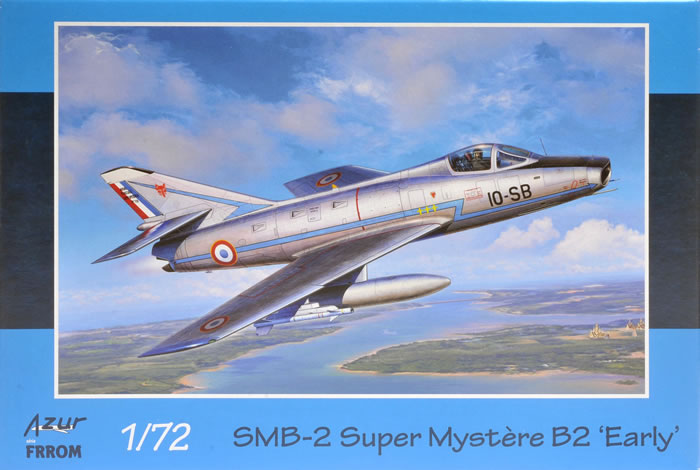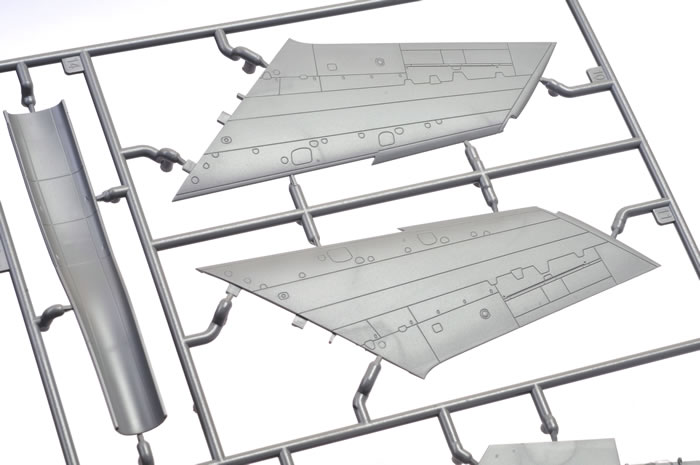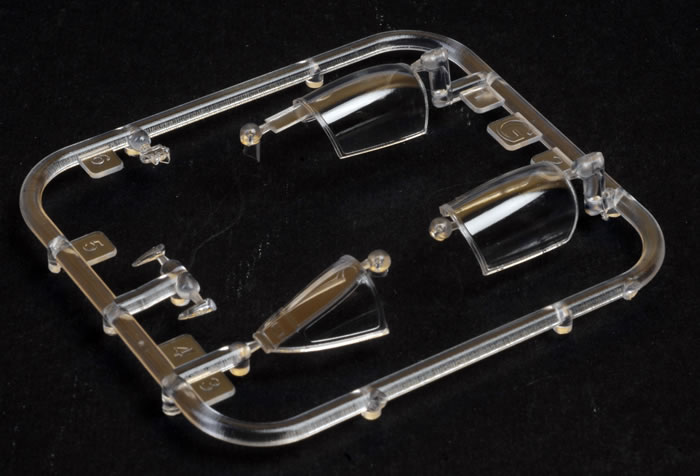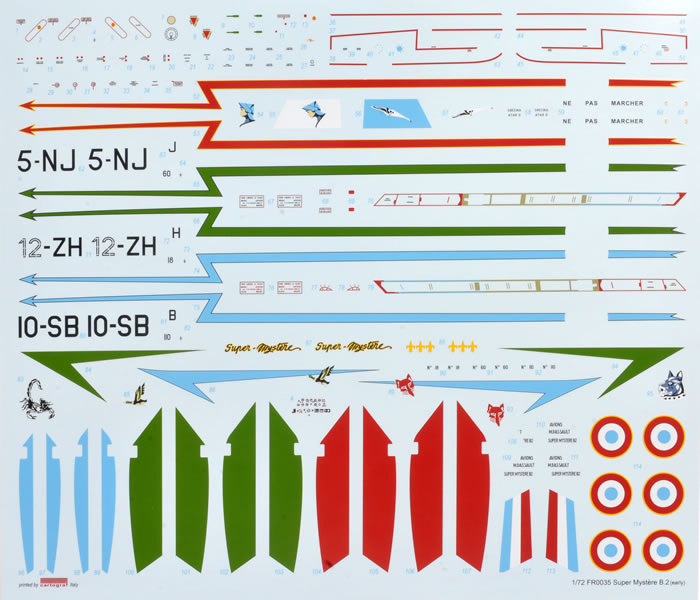Dassault Super Mystère B.2 ‘Early’

Azur FRROM, 1/72 scale
S u m m a r y : |
Catalogue Number: |
Azur FRROM Kit No. FR0035 - Dassault Super Mystère B.2 ‘Early’ |
Scale: |
1/72 |
Contents & Media |
Details below. |
Price: |
£22.50 EU Price (£18.75 Export Price) plus shipping available online from Hannants |
Review Type: |
First Look. |
Advantages: |
Nicely moulded, well-packaged, a good set of decals, strong box, great instruction sheet. Nice engineering to prevent the ‘see-through fuselage’ look. |
Disadvantages: |
None noted. |
Conclusions: |
This kit is a lovely package and should please the Francophile and attract other modellers to try a build as it is such an attractive kit and plane. The much-loved, and quite accurate Airfix kit has been well and truly usurped! |
Reviewed by
Graham Carter

HyperScale is proudly sponsored by
Squadron.com
From what I read the Super Mystère B.2 first flew in 1956 and was the first western European aircraft able to exceed Mach 1 without needing to dive. Some 180 Super Mystère B.2s were produced and used by the Armée de l'Air until the mid to late 70s. Also, 28 aircraft served with the Israeli Air Force, some dozen or so then being passed on to the Honduran Air Force who used them until the mid 1990s - thats a pretty fair service life!
Like its contemporary the Hawker Hunter, the Mystery is an elegant jet fighter and just looks ‘right’. While the French aircraft served in NMF during their service years I recall seeing a spectacular tiger striped one for the Tiger Meet during the late 70s, the decals for which were done by Modeldecal around that time.
Frrom's 1/72 scale Dassault Super Mystère B.2 comes in a strong top-opening box (hooray!) 12x8x1.5” ( 30x20x5cm), with an attractive CG illustration on the lid. The main sprues are bagged together but with the clear parts and decals in their own bags. The box contains 80 styrene parts in a mid-grey, 6 transparent parts and decals for 3 different aircraft, all in NMF but with a lovely range of typically French marked planes with squadron badges and coloured flashes on the fuselage and wing tips. There are three main sprues, a smaller one for the undercarriage components and two identical small sprues for the tanks and missiles and their pylons.
Parts are well-moulded, with no signs of flash or sink marks, and a light swipe with a sharp blade will get rid of the small seams on some parts. Surface detail comprises nicely engraved panel lines as we are coming to expect from these so-called ‘short-run’ kits these days.
Instructions are top quality, in colour and in a 16 page A4 booklet (although the last 3 pages are just images of other Azur-Frrom kits). Starting with a brief history of the aircraft and then the mandatory parts map. the construction stages begin with the fuselage which contains a well-detailed cockpit including side consoles and pedals, as well as the undercarriage bays and both intake and exhaust trunking that go a goodly depth into the front and rear of the fuselage - great idea as they prevent a see-through fuselage! Colour call-outs are for each stage and part in Gunze but at least we have the name of the colour as well as its number. There should be just enough room around the front of the model to fit a little weight to alleviate the dreaded tail-sit! From past experience with the Airfix rendition, this is a precariously balanced aeroplane.
The wings come next and have wheel bay details moulds in as wells separate clear wing lights. The upper sections fit inside the lower wings to ensure nice sharp trailing edges. Note that most of the time when on the ground the main doors are closed so one does not need to go nuts adding unseen detail.

The canopy is really clear, and the rear section can be posed open or closed. The rear is propped up above the airframe when open, a feature I dimly associate with some USAF jet but I cannot recall which one it was with the same arrangement, with the appropriate mechanisms provided by FRROM to represent this option.

To stick under the wings, FRROM give you two types of drop tanks and a pair of missiles which look like Sidewinders, AIM-9Bs, which was the weapon of choice for aircraft serving in the Armée de l'Air in the ‘60s.
Colours & Markings
Decals are printed by Cartograf so that should indicate a good quality product; colour density and register look just terrific and sufficient tiny service stencils are provided to keep you burning the midnight oil!

Three aircraft are catered for, all in natural metal:-
-
SM B2 No. 110, 10-SB engaged in the SEATO cruise to Bangkok in March 1961, with a blue fuselage flash and wingtips.
-
SM B2 No. 18, 12-ZH from 02/07/68 to 04/03/70, EC 02/12 "Cornouaille", Cambrai, with a green fuselage flash and wingtips.
-
SM B2 No. 60, 5-NJ from 05/03/61 to 05/04/64, EC 01/05 "Vendée", Orange-Caritat. with a red fuselage flash and wingtips.
This kit is a lovely package and should please the Francophile and attract other modellers to try a build as it is such an attractive kit and plane. The much-loved, and quite accurate Airfix kit has been well and truly usurped!
Thanks to Azur FRROM for the review sample.
Review Text & Images Copyright © 2018 by Graham Carter
Page Created 14 February, 2019
Last updated
22 July, 2019
Back to HyperScale Main Page

|
